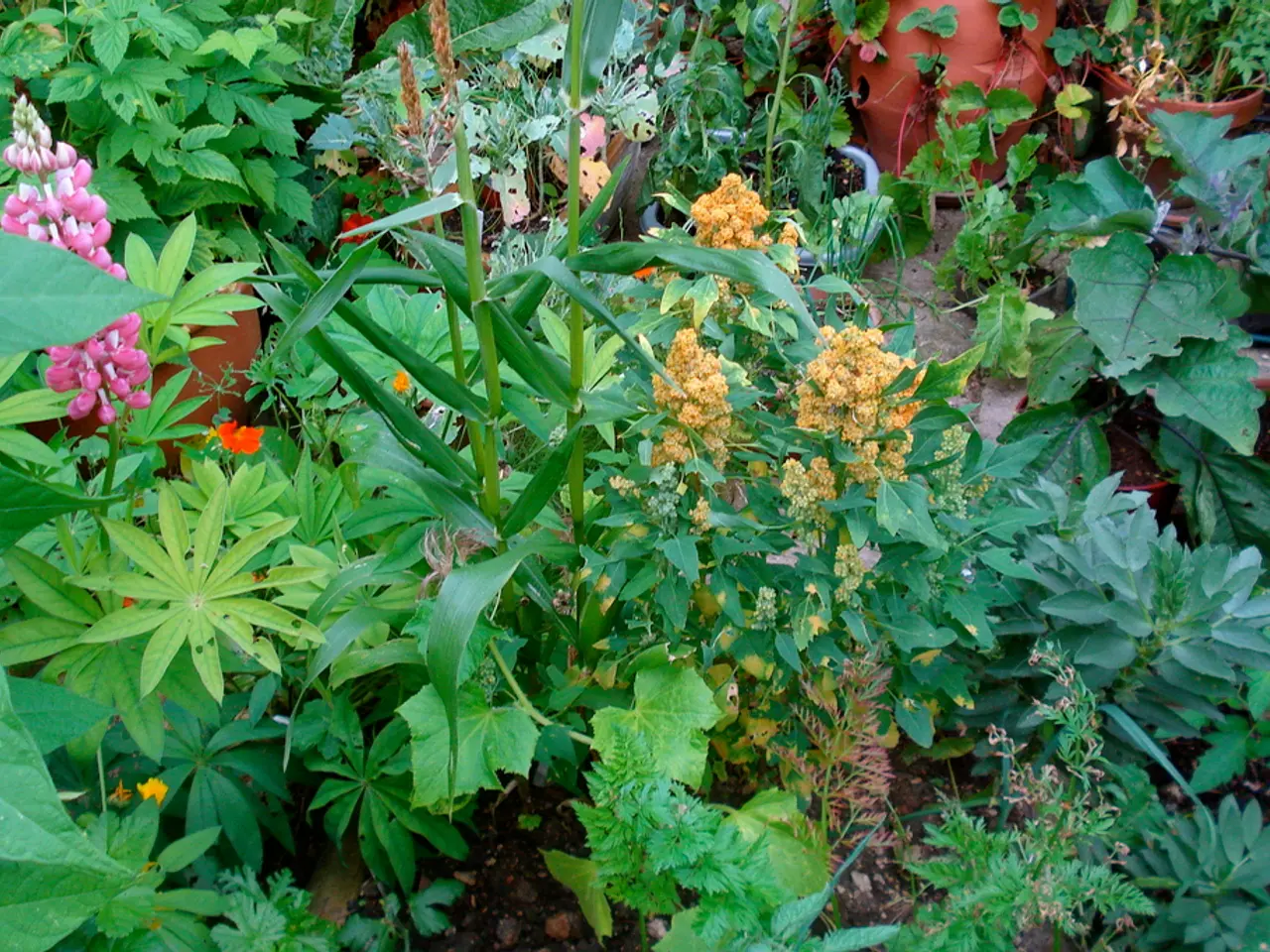Guide to Cultivating and Nurturing Globe Artichokes
Globe artichokes, scientifically known as Cynara scolymus, are large-growing perennial vegetables that can be grown in suitable climates. These plants, with their dramatic and ornamental appearance, are not just limited to vegetable gardens but can also make a striking addition to a garden border.
To grow globe artichokes successfully, start by planting seeds indoors about 2-3 months before the last frost. Plant the seeds about 1/4 inch deep, and transplant them outdoors once the soil has warmed. Space the plants 3 to 5 feet apart to accommodate their large size and reduce shading issues.
Artichokes prefer well-drained soil and benefit from regular watering to develop large, firm buds. Organic mulch can help retain soil moisture and suppress weeds. As these plants are heavy feeders, apply a balanced fertiliser regularly.
Harvest the buds when they are firm but before they open fully. For pest control, employ integrated pest management techniques such as crop rotation, turning under spent plants to nourish the soil, and possibly drip irrigation to reduce disease and water use.
In cooler climates, where artichokes may be grown as annuals, these practices are especially important. Artichokes thrive in USDA zones 7-11 and require consistent moisture like other large perennials.
In spring to early summer, you can also plant pot-grown plants or rooted sections known as suckers or offsets. Give globe artichokes plenty of space to grow, as they reach a height of around 1.5m tall and a spread of around 60cm.
Water during dry spells in spring and early summer whilst the buds are forming, to improve crop size and quality. In spring, mulch with fertile organic matter such as garden compost and feed with a general fertiliser high in potassium. Cut back the dead foliage annually.
The edible part of the globe artichoke is the base of the immature flowerheads. To harvest, cut them before they open fully but when they are well-sized and firm. After harvesting, water in, then keep watered during dry spells until established.
Globe artichokes are not related to Jerusalem artichokes but are a relative of the ornamental herbaceous perennial known as cardoon (Cynara cardunculus). If you're looking for sources to buy globe artichokes, consider specialist suppliers like Sarah Raven, Suttons, and Thompson & Morgan, specifically the 'Charlotte Ruse' variety from Thompson & Morgan.
Remember, raising artichokes from seed can result in plants of varying quality, requiring selection and propagation of the best ones by division. Cropping declines on older plants, so divide and replant every few years to rejuvenate them. Cut back dead growth in winter, or leave seedheads standing to provide food for birds.
With these tips, you're now equipped to grow and care for your own globe artichokes, enjoying the satisfaction of harvesting these delicious and ornamental plants in your garden.
Maintaining a home-and-garden lifestyle, consider incorporating globe artichokes in your garden design. These striking plants, with their large size and ornamental appearance, can make an excellent addition to your home-and-garden, serving both as eye-catching décor and a source of edible produce.




